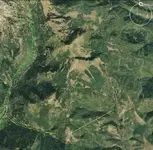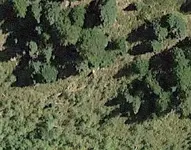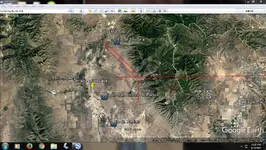Howdy embrym,
The Spanish directions clearly state 12 "leguas" West of the Timpanogos River. Hoyt Peak is to the East, and the Henry Mountains are no where near. In my search I found that the Timpanogos River was renamed as the Provo River. I also found that at that time, the "legua" measured 5,472 meters. Since that river doesn't run straight North to South, I took several measurements to begin my search.
I don't know about Captain Jose Joaquin Garcia, but most of the explorers, ship captains, and mineralogists were either Basque, or has a Basque in their crew helping them. The Basque were the elite of the elite, the first to sail around the world, and most of the Spanish ships sailing at that time were made in Basque shipyards. In other words they could measure longitude on water, or land with the sextant. They did not have to walk for a day to get a measurement.
From 5 different measurements, most put me just inside a valley, while some put me just inside some mountains close to that valley. The measurements just inside the valley are the only ones close to the mouth of another river, which has to be Garcia's Santa Anna River. It seems to me that Garcia took the measurement from the Timpanogos River, at the junction of hwy 189 and 92. They had maps with their trails, and trails later became our roads.
From there 12 "leguas" West puts you in what would be "Hiebra" Valley, closest town is Stockton. In that valley below Stockton, you can find where a river, and many creeks ended up in a very small lake. It is hard to tell the exact point where the mouth of that river used to be, but I picked a spot near the center of the South part of that small lake. I can later give you the coordinates for it.
From the mouth of that river, you go 2 "leguas" to the South East, then 1 "legua" South "por tierra" (by land) meaning not through the mountains, but just inside the valley. From there you will take a canyon that enters the valley from the East. The town of Mercur is in that canyon. You follow the canyon to a round peak bare of trees, and from that bare round peak you measure l600 varas North East to the mine.
I can't make out all of what is high lighted in the directions to translate them properly. There is a bare round peak in there, but there was also a lot of strip mining done, so maybe some other bare round peak got leveled?
Homar










